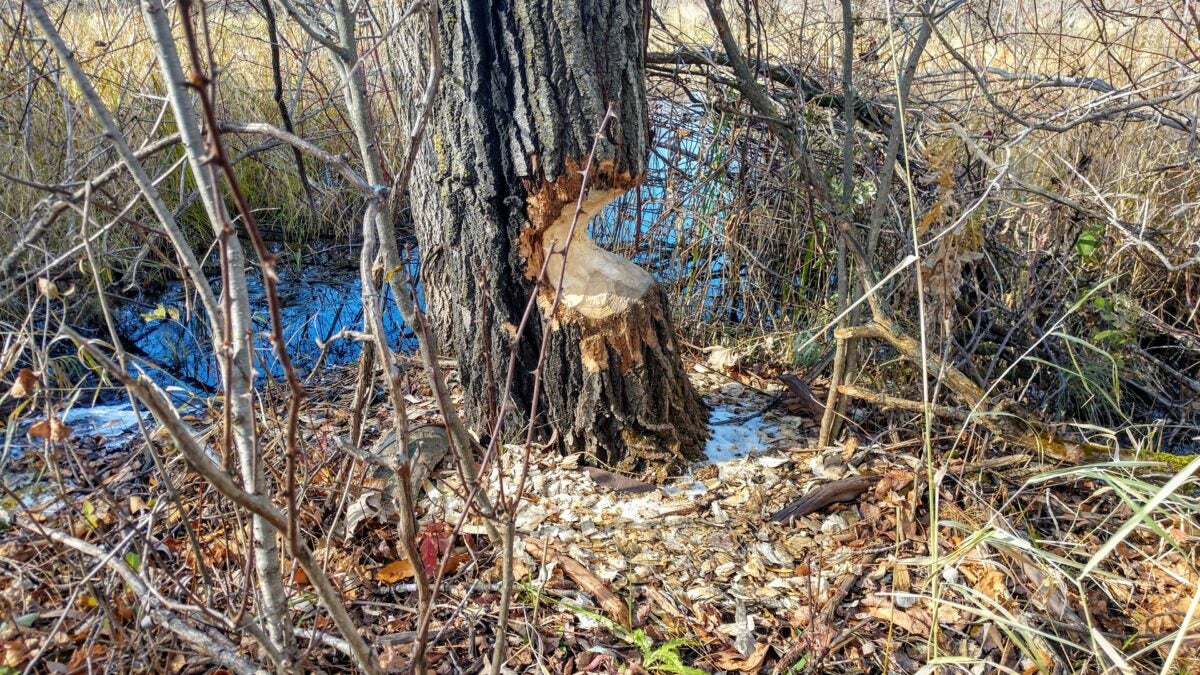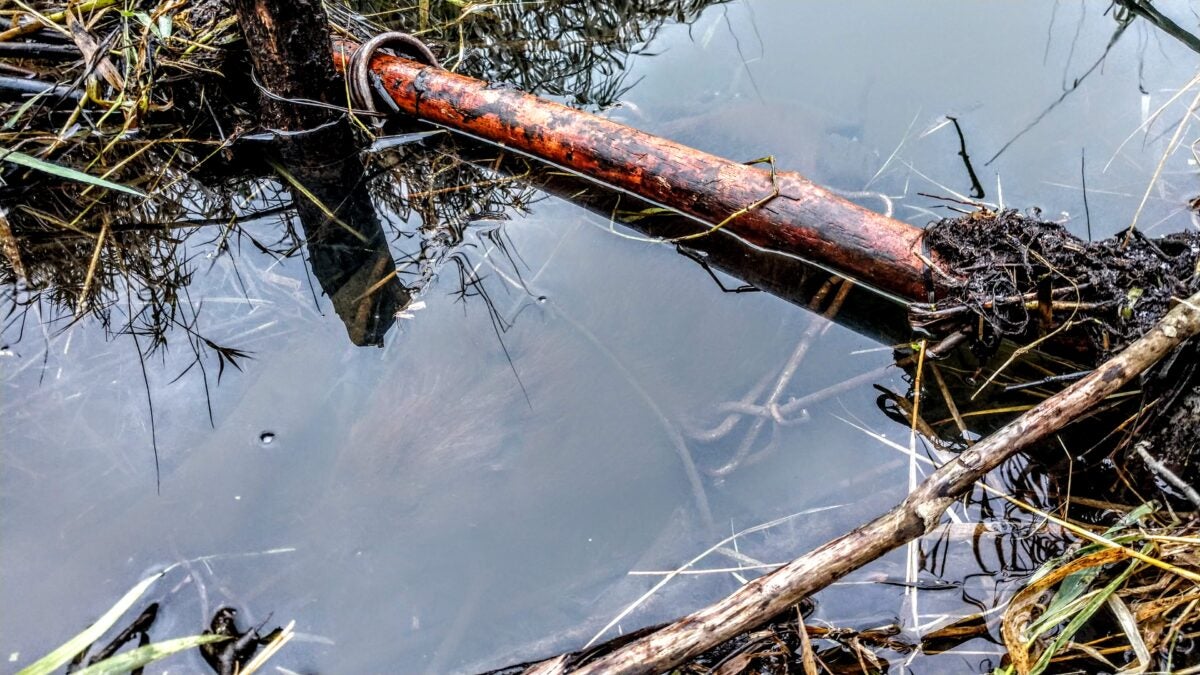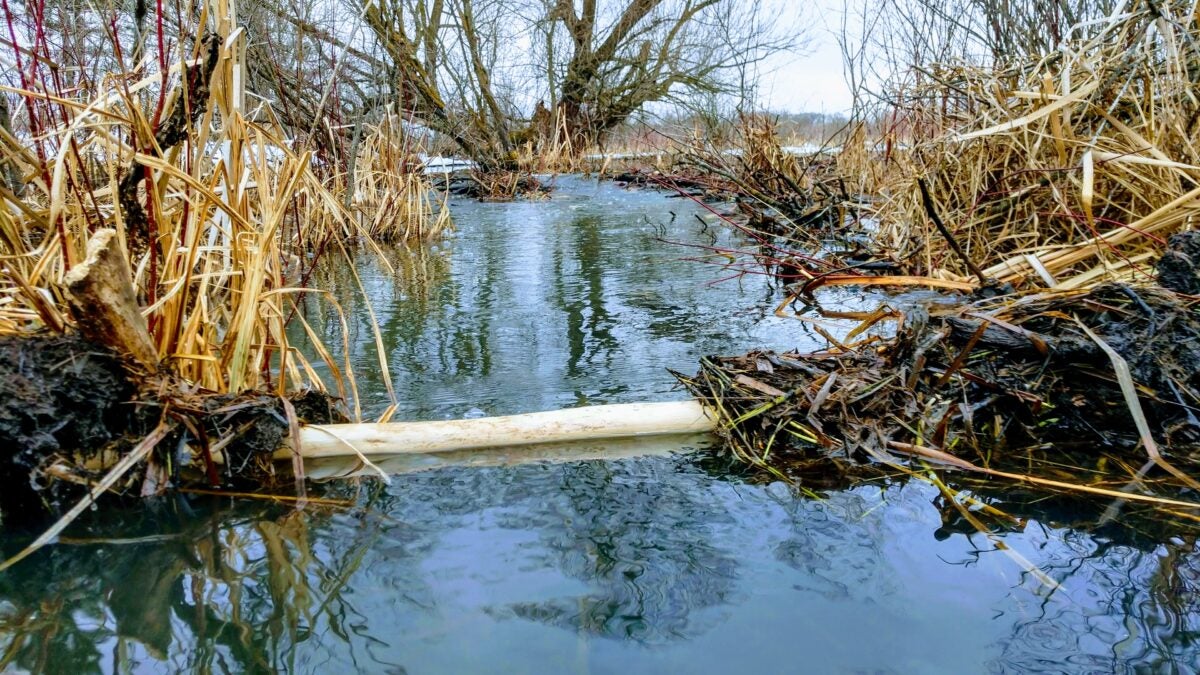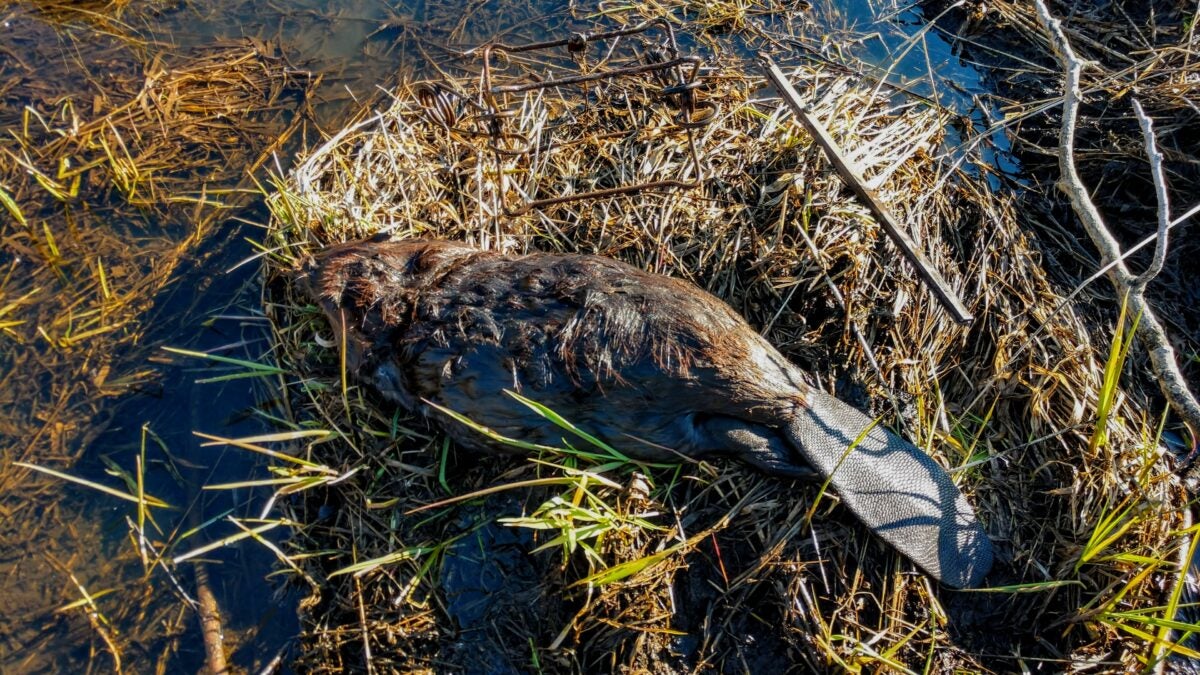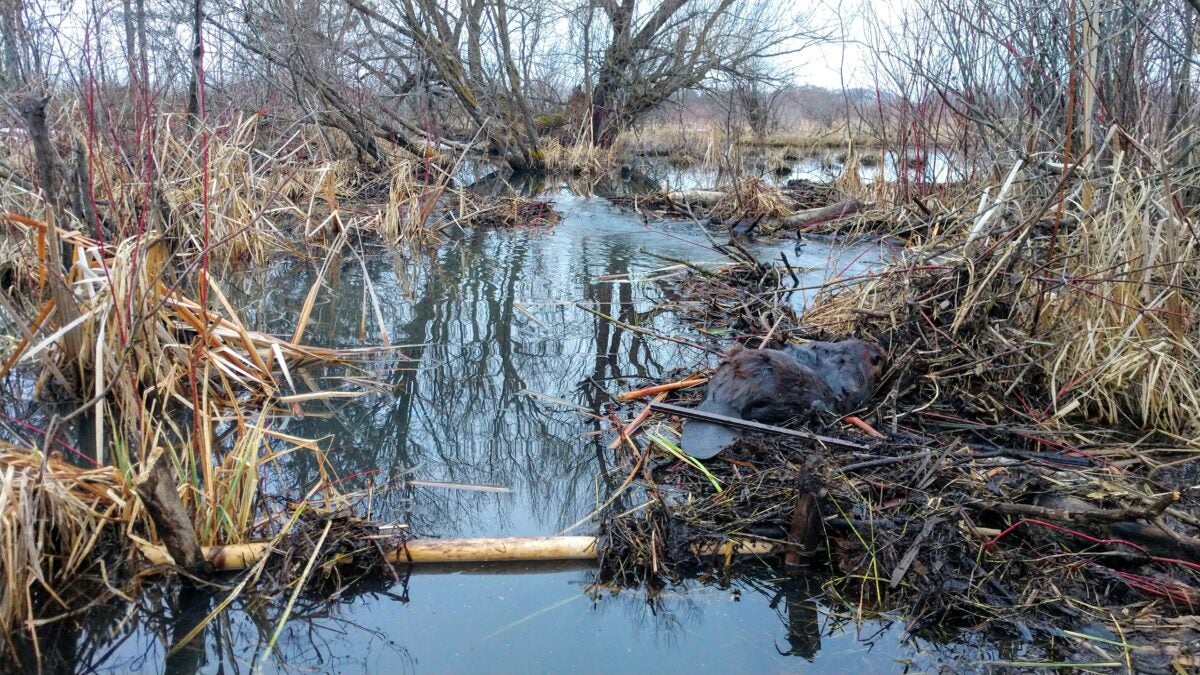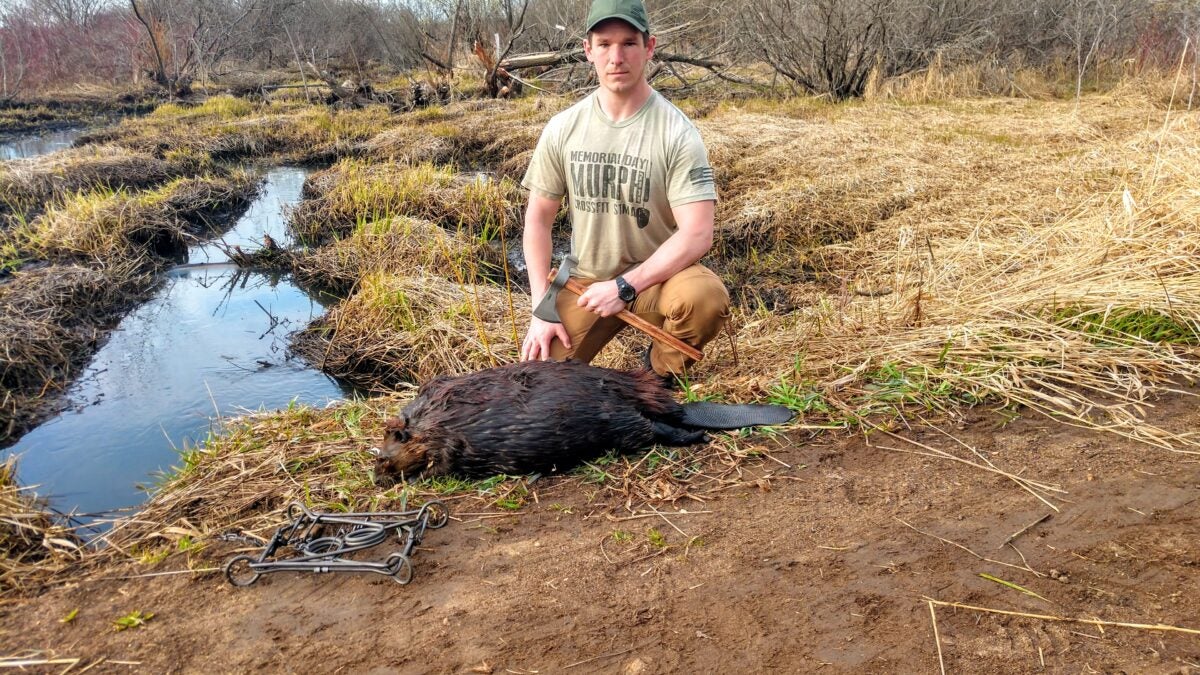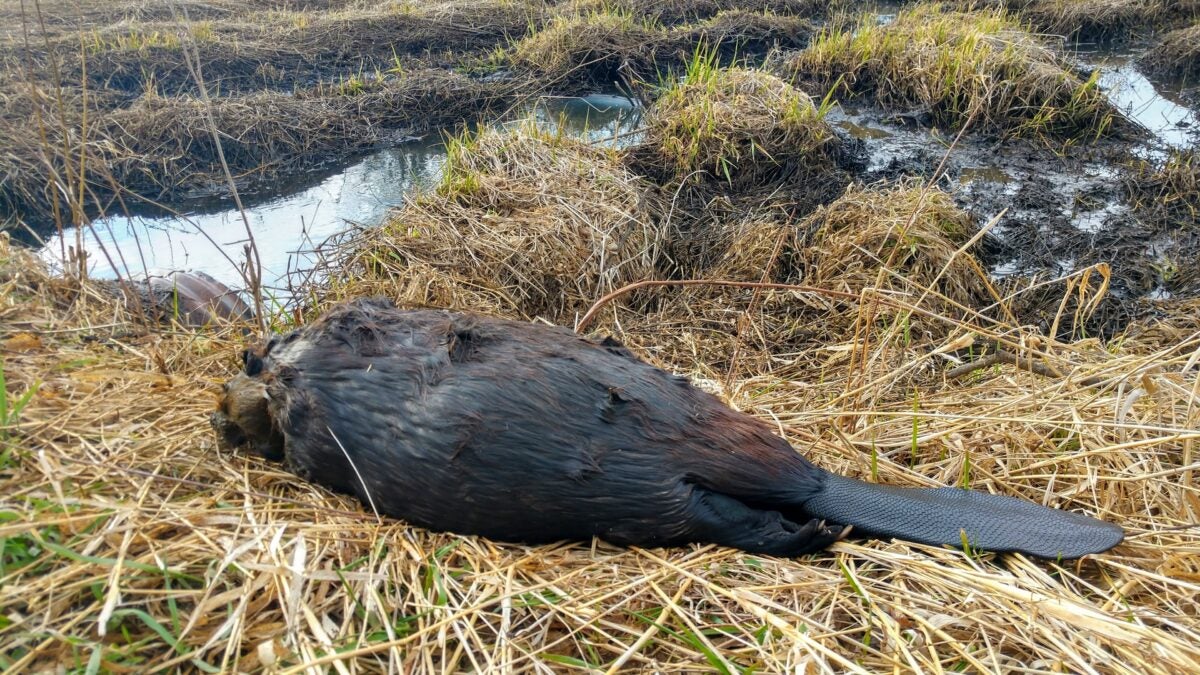How to Trap a Beaver: Safe and Effective Methods Explained
Adam Scepaniak 10.17.24

Trapping is a dying art that once shaped much of the great landscape of the United States that we know today. The fur trade throughout the Great Lakes and much of the Western front is what paid bills, provided clothing, and was an economy unto itself as we traded with Canadians, the French, and many other countries. The reason why someone might still trap beavers today would likely stem from the three hallmarks of being a good steward to wildlife: for protection of one’s livelihood or home, sustenance, or income. A beaver pelt, their meat, tail, and castor oil are all valuable commodities that can be sold or utilized by a trapper.
When trapping beavers it is not only important to legally do so, but also humanely. That is why certain trap types are recommended and others are not, for efficacy reasons, as well as their legality when deployed under certain conditions in specific locales.
Beavers do serve a valuable purpose in ecosystems by creating areas of water that can survive periods of drought. This benefits all wildlife as it can spur new growth in wetlands and forests. Also, with beavers cutting down trees, this allows previously obscured sunlight to penetrate through a forest’s canopy allowing saplings to spring up in their place. Beavers can be a great asset to an ecosystem, but if they are threatening your livelihood, or you need the sustenance or resources they provide, you may need to trap them. My father instilled the knowledge in me that I carry today, but not everyone is so lucky. So, today we shall share the tricks of the trade to effectively trap a beaver.
Understanding Beaver Behavior
Beavers frequent all bodies of water from roaring rivers to streams and even trickling county ditches, but what they desire are large flooded areas. Whether that is an area they created or they have the opportunity to inhabit a lake. If a large body of water is not available for them to claim as a home and territory, that is when they resort to building dams on waterways to create one.
While beavers are not considered nocturnal, they are very active at night and during the lowlight hours of the day. They feel safest in their lodges or on the water as it is their home turf, and even safer in the veil of darkness so predators who might be bold enough to venture into their domain are disadvantaged. While much of their activity occurs at night, it is very common to see them active during the day as well: feeding, traveling, cutting down trees, and building a dam or lodge.
The presence of beavers can be easily noticed from trees being chewed on, a lodge on a body of water, a dam being built, and runs or pathways developing through grass and cattails.
Legal Considerations and Permits
Make sure to become educated on your local and state laws because they can vary by state, county, and/or your local municipality. This can become even more complex if you are trapping national or state parks, refuges, or wildlife production areas. Some outright ban trapping while others allow for it, but only under special conditions. So, it is important to check local laws and regulations.
Make sure you are properly licensed, or if you are engaging in nuisance trapping, that you get written permission from the correct governing body or authority who oversees your area. The consequences of illegal trapping can be fines, the suspension of being able to trap or hunt in your state, or worst of all, prison time.
Types of Beaver Traps
When it comes to the types of traps that are legal for beaver trapping your options are limited. Live traps, body grip traps (conibears), and snares are your three options, but only one of them is recommended.
Live Traps
Most live traps that you will find in a hardware store or sporting goods store are meant for smaller animals like rabbits, squirrels, skunks, or raccoons. Beavers in rare instances can get to be 70+ Lb in size; moreover, they are predominantly aquatic creatures. So, attempting to use a live trap on dry land typically has an incredibly low success rate.
- Pros
- You’re not harming the beaver
- Should be legal in all 50 states
- Cons
- Beavers may not fit
- They don’t spend a lot of time on land
- Even if you relocate a live beaver, they may return
- You still have a beaver problem
Body Grip Traps (Conibears)
Conibears are the most common and widely used trap for beavers. Specifically, a 330 conibear. There are 3 basic sizes to conibear traps being:
- 110 Conibear – muskrat, mink, weasel, etc
- 220 Conibear – raccoon, opossum, etc
- 330 Conibear – beaver, otter, etc
A 330 conibear is incredibly strong and difficult-to-set; thus, it demonstrates a swift, humane harvest when a beaver enters one and it is set off. Setting tongs are typically used to set a 330 conibear because of the strength required to set the springs on each side.
- Pros
- Swift, humane harvest
- High success rate
- Legal in most states
- Cons
- Extremely difficult to set
Snares
According to the Association of Fish & Wildlife Agencies, “The use of snares (any device that consists primarily of a cable and lock used to restrain a furbearer) to capture furbearers is allowed in 40 states. In some, the use of these devices is restricted to various species: beaver, otter and canids.” So, while 20% of states ban the use of snares on beavers, most people elect to not use snares because they are ineffective (typically deployed on land) and not considered humane (you don’t achieve an ethical, swift harvest).
- Pros
- Can be cheap to purchase or fabricate at home
- Cons
- Can be often ineffective
- Low success rate
- Not legal in all states
- Potential to snare household pets
Selecting the Best Trap Location
Beavers often get a “bad rap” for being quite chaotic and disorderly, but that is simply not the case. If you understand how to see the lay of the land – through their eyes – and understand their base nature, you can begin to observe their routes of travel, movement, and likely pinch points to deploy traps.
We have already discussed that your 330 conibears should be based in water trap sets for a higher success rate. Also, you will have a lower likelihood of incidental catches of unwanted animals (household pets, other fur bearing animals out-of-season, etc). Look to place conibears across narrow channels, ditches, and runs in flooded areas barely below the water’s surface and securely staked down on both sides. You can also identify “runs” on a dam: a specific slick, ramp-like area where beavers will cross their dam and nowhere else. On the bottom side of a run going across a dam, a conibear could be placed for a high-percentage trap set.
Setting Up the Trap
Your next consideration after trap type and placement is concealment. If you are using wood sticks as a cross support and a stake on either side of your submerged conibear, you will want to make sure the sticks/wood are not green or fresh. Beavers may eat the sticks you’re using to support and structure your trap set which could accidentally set the conibear off, resulting in you missing a beaver. Additionally, you will want to place leaves, grasses, and mud on your supports – whether they are wood or metal – to make your trap set more naturally blend in.
You can sometimes deploy lures with mixed success on bank sets depending on if the lure is natural or manufactured. Beavers are instinctively territorial, and if a neighboring beaver enters their domain, it will boil up a competitive and aggressive nature in beavers to kick the foreigner out. Store bought lures often are not effective because it is a mix of urine and castor oil creating an amalgamation that simply smells bad, and not like an individual beaver. If you happen to be trapping separate areas for beavers, you could take a harvested castor gland or oil, place it on a bank above a submerged conibear, and see a high success rate as native beavers come to kick out the foreigner they smell.
Finally, be careful and exercise extreme caution when handling traps that are set. A 330 conibear is strong enough to crush bone. So, you do not want to have one go off on your arm. If your arm survives due to heavy clothing or your own muscle mass, it will be nearly impossible to take the conibear off without help.
Checking and Maintaining the Trap
It is normally suggested that you should check your traps daily as you do not want a harvested beaver to spoil if you are keeping the pelt, meat, or castor oil. Additionally, you do not want a successful trap set to be occupied with a harvested beaver for so long that it impedes you from trapping an additional beaver in the same set.
Very few states or counties have regulations typifying how frequently you need to check traps, but it is still something to look out for and consider while reading the regulations that may apply to you.
After harvesting a beaver, you will want to remove it from your trap and get it somewhere cool and in the shade if you cannot pelt and process the beaver immediately. This ensures the pelt, meat, tail, and castor oil does not spoil regardless of how much or little you will be keeping.
Dealing with Unsuccessful Traps
So, the saying goes, “the definition of insanity is trying the same thing over and over again expecting different results.” If you have some trap sets that are falling short and are flatly not successful, look at tweaking them to make them more successful or moving them to a new location entirely. Sometimes we don’t give beavers enough credit and they could be suspicious of the trap set that you believe is perfect. So, a subtle change could be what you need to throw them for a loop and make a harvest.
Preventing Future Beaver Problems
It is difficult to deter beavers from returning to your property, even if you may have made a dent in their population, because if they are motivated to build a dam and flood an area they will likely see that endeavor through. To be a good sportsman to our native wildlife, I would avoid using chemical deterrents because those can run into waterways harming fish, waterfowl, and other unintended animals as well as the local water system. Sometimes continually trapping and using metal fencing (for your yard) or metal tree guards on cherished trees are your only option.
To openly destroy a lodge or dam is considered a crime in many states. So, we would not recommend doing that as enticing as that thought might be.
Conclusion
When it comes to beaver trapping there is more at stake than simply eradicating a nuisance on your property. Understand the laws and regulations that may apply to you, only trap if absolutely necessary, and remember the 3 tenants of being a good steward to the outdoors where you should only harvest animals for protection of one’s livelihood or home, sustenance/resources, or income. Errantly harvesting animals paints all of us in a bad light. Finally, if you need help, reach out to your local conservation officer or even seek out a mentor. Beavers play an important part in our ecosystem as long as they aren’t chewing on your house.
